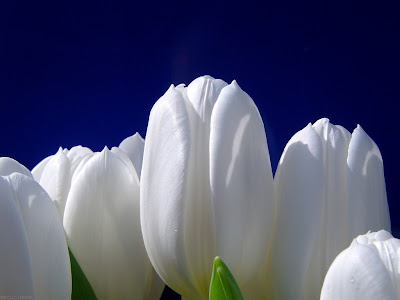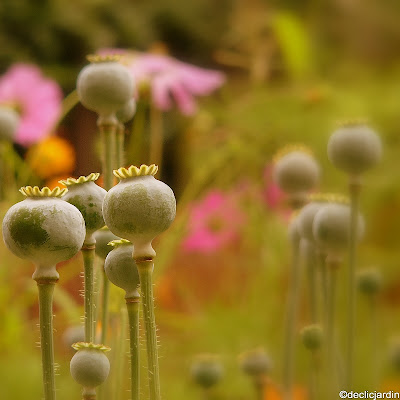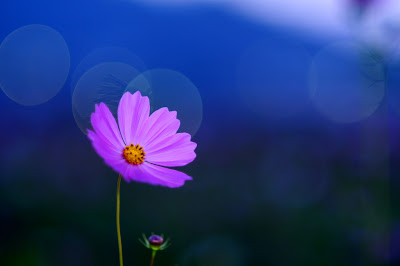 |
| Photo by: Rose Mary |
Immortal flowers
Flowers are gifts from mother- nature to all good-hearted people; weeping children (and even women) smile when presented with flowers! Their color, fragrance, arrangement of parts; all are so perfect; it is a pity that these wonderful things are rather short-lived. If there is a will there is a way; a flower and its charm can be made immortal (sorry; not fragrance) by a photographer! But wait there are some riders; please read this article for immortalizing those wonderful creations.
 |
| Photo by: Fabio Gismondi |
Please remember Julie Andrews in the movie ‘Sound of Music’ singing and running through a bed of flowers holding a guitar; I saw that movie more than a quarter century back; still the memory lingers on!
As with any other genre of photography flower photography is also a combination of technical and artistic skill. We have so far covered much of the technical aspects involved in the photography of flowers in our previous articles, now it’s time to move on to the more artistic side of photographing flowers.
Start by Selecting a Flawless Flower
 |
| Photo by: Barry |
In order to get the best results start by selecting the best specimen available to photograph (‘photogenic flowers’ to be precise). The flower should be flawless; garden- fresh and physically perfect. Flowers that have lost their freshness, have scars, or have been partially eaten by bugs should be avoided.
Choose a Flower with Character
 |
| Photo by: Mclcbooks |
To make great flower photographs, the flower you select should not only be flawless but also have a unique character. Character is something hard to define but to put it plainly its something capable of immediately grabbing the viewer’s attention and retaining it.
Add a Center of Interest
 |
| Photo by: Danny Perez |
To make flower photographs stand out from the rest of the crowd; add an element that would act as the center of interest in the picture. It must be new and innovative; after viewing the center of interest; the viewers’ eyes would wander through the rest of the picture and immediately return to it. Thus the center of interest would remain as a comfort-zone for viewer’s eyes without it, viewer’s attention will quickly wander off from our image.
A center of interest could be fairly obvious like an insect on a flower or more subtle like the curves on the petal or anything a photographer’s imagination can bring. One should make sure to the focus is right on center of interest, thus the image actually revolves around the main object and the purpose of the rest of the image is to complement it.
Flower Photography and Composition
 |
| Photo by: V1ctory 1s M1ne |
How the various elements are arranged in the picture is very important. The general rules or rather guides of photographic composition are applicable in flower photography too. The simplest and most commonly used among them are:
Rule of thirds
Rule of thirds states that the image be divided into thirds both vertically and horizontally and the center of interest in an image should be placed either along one of the dividing lines or for better results at their intersections.
Golden Triangle
Golden triangle is an alternative approach to the rule of thirds. In the golden triangle method, a diagonal is drawn from one corner of the image to the opposite corner. Then, lines are drawn from the other two corners such that they intersect perpendicularly with the first diagonal. Then the center of interest is to be placed near one of the intersections of these lines.
Framing a picture adhering to these compositional rules will result in a more dynamic and balanced photograph. The general idea is to move the subject from being in the dead center of the frame, as it often looks static. It is said that rules are meant to be broken, but breaking of rules should be to strengthen the quality of the image.
Unique Style of Composition (Your own signature)
 |
| Photo by: Giovanni Orlando |
Like the great painters, photographers also can try and develop their own unique style by which their work could be easily recognized. Having a unique style makes a mark as a photographer and helps to create an identity. A viewer should easily identify the artist and the creative talent behind. Here are certain tips that will help you develop your own style of composition in flower photography.
Practice the Art of Elimination
Retain only those elements in the frame; thinking twice whether that can complement the main center of interest; if so how? Mercilessly eliminate all non- contributing elements (distractions).
Identify Your Center of Interest
 |
| Photo by: William Marlow |
The gist is in identifying the center of interest in the frame. Look either for distractions, or other elements that compete for attention. Compose the frame free of distractions there by making the main subject the only resting place for the viewer’s eye. This is easier said than done, so here are certain tips.
 |
| Photo by: Dmitri Popov |
Move in Closer:- the simple act of moving in closer (should have a macro lens to do that) is the easiest method to crop away most of the distracting elements from the frame.
Selective Focus:- use focus to catch your viewers’ attention to the main center of interest. This is most commonly used technique for maximum impact.
Use Shallow Depth of Field:- selectively focusing on the center of interest and employing a very shallow depth of field makes sure everything else in the picture is captured as a smooth blur with the main subject alone in sharp focus; thus defeating distractions.
Contrasting Backgrounds
 |
| Photo by: Franck Minez |
Use a contrasting background to minimize its detail and strengthen the center of interest look for contrast in tone, color or pattern. The following color wheel will be of help to identify different colors, and the ones that both complement and contrast them so as to use them in your images.
Contrasting colors - The colors opposite each other
 |
| RGB Color Wheel: Source: Wikipedia |
Blurred Background
 |
| Photo by: Franck Minez |
Blurring background is similar to the technique of using selective focus + shallow depth of field. The difference is in the former technique it is mostly parts of the subject that is blurred and now it is only the background that is blurred. Using this technique often requires a background that is some distance away from the flower.
Compositional Tricks to Emphasize the Elegance of the Flower
After successfully eliminating all the distractions from the frame; it is time to emphasize the elegance of the flower. To do this one must identify the key elements that contribute to the flower’s attractiveness. In most cases it’s the lines and curves of the flower that drags attraction; let us go to that.
Using Leading Lines
 |
| Photo by: Harold Lloyd |
Use any lines to your advantage by composing your picture in a way that those lines lead the viewers’ eyes directly towards the main center of interest in your image.
Using Curves in Flower Petals
 |
| Photo by: Ramil Sagum |
Unlike leading lines curves in the flower petal does not direct the viewers’ attention towards the center of interest but rather serve the function of emphasizing the elegance of the flower by their sheer presence.
Tricks to Make Your Flower Photographs Dynamic
The trick to add a touch of dynamism to the flower photograph is to wisely use the two elements; Saturation and Contrast.
Achieving More Saturated Colors
 |
| Photo by: Dennis |
Flowers attract attention by their vibrant colors; more saturated the colors are in the images; the more dynamic they feel. A winning strategy to get more saturated colors in flower photography is to use the right kind of light; diffused light on an overcast day is the best possible source; diffusers that go between light source and flower also can be tried. A polarizing filter will be of much help for eliminating reflection and revealing more detail and saturated colors.
Using Contrast
 |
| Photo by: Arbyreed |
When we look at any image, not just a flower photograph, our eyes are immediately drawn to the area of maximum contrast; this is due to the unique characteristics of the human brain. As photographers, we can use this to our advantage. While photographing flowers try to emphasize the contrast thus adding to the dynamic nature of the images.
Flowers are everywhere and anybody can shoot them; this makes flower photography a crowded field; crowds are just crowds; one who stands out alone matters. Mastering the nuances with artistic bend of mind as well as the techniques involved alone can make an image unique and its photographer stand out; ‘Full many a flower’ should not remain unseen and un- blushed! Bring it out to the world; make it immortal with a kiss of your signature!
Post a Comment